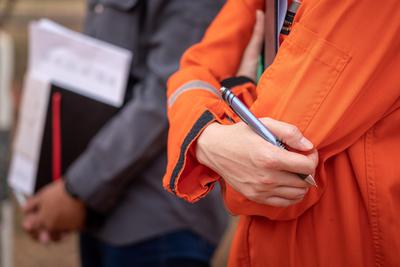What Are the Four Categories of Occupational Health Hazard?
It's an employer's job to provide a safe workplace and protect employees from occupational health hazards. Failing to identify safety hazards in the workplace is one of the main reasons for workplace accidents, injuries, and illness.
To protect workers effectively, employers must know how to recognize these hazards and take action to eliminate them or provide proper protective equipment. Keep reading to discover many examples of workplace hazards.
Listen to article

Occupational Health Hazards
Before employers can remove a hazard, they must first understand the types of occupational health hazards. There are four types of hazards: chemical, biological, ergonomic, and physical hazards.
According to the Occupational Safety and Health Administration (OSHA), employers and employees must take the following actions to identify and assess occupational health hazards:
The Four Types of Hazards
There are four occupational hazard types to consider when identifying and assessing the workplace.
Chemical Hazards
Chemical hazards occur when employees are exposed to solid, liquid, or gas chemicals. These include cleaning products, vapors, fumes, flammable materials, and pesticides.
Biological Hazards
Biological hazards are usually associated with industries that work with people, animals, or infectious plant materials. These industries include healthcare, schools, daycares, nursing homes, outdoor occupations, correctional facilities, and emergency medical services. Biological exposures include blood, bacteria, viruses, mold, bodily fluids, animal droppings, plants, and insect bites.
Ergonomic Hazards
Ergonomic hazards occur when strain is put on the body from working, whether from working conditions or body positions. It's often difficult for employers to identify this occupational hazard type since body strain usually remains unnoticed until an injury occurs or becomes a long-term illness.
Physical Hazards
Physical hazards are anything within the environment that can cause harm to the body, even if it doesn't touch it. This occupational hazard type includes excessive exposure to sunlight or ultraviolet rays, extreme temperatures, radiation exposure, and excessive noise.
Other Types of Occupational Health Hazards
In addition to these four types of hazards, employers should also identify other common workplace hazards like dangers that cause trips, slips, and falls. These include spills, ice, snow, rugs, cleaning products that cause slippery floors, cords, wires, and anything else that might cause someone to fall, slip, or trip. To avoid these types of hazards, employers and employees must:
By identifying these common workplace hazards and developing an occupational health program, employers can avoid workplace accidents, injuries, and illnesses.
Frequently Asked Questions
What is an example of a biological hazard?
Biological hazards apply to industries working with people, infectious plant materials, and animals. These hazards include exposure to diseases from animal droppings, blood, human waste and bodily fluids, bacteria, plants, mold, viruses, and insect bites.
What is an example of a physical hazard?
Physical hazards are anything within the work environment that can cause bodily harm, whether or not the hazard touches the body. Physical hazards that cause damage without coming into contact with the body include extreme hot or cold temperatures, exposure to excessive ultraviolet light, excessive noise, and radiation exposure. Other physical hazards come in contact with the body and cause injuries such as loss of limbs, fractures, and other physical injuries.
What are the four categories of occupational health hazards?
The four categories of occupational health hazards are biological, ergonomic, chemical, and physical hazards. In addition to the four types of hazards, employers must also consider hazards leading to slips, trips, and falls.
What are the types of occupational health?
Occupational health problems are injuries, illnesses, and accidents occurring at work. Occupational health programs help eliminate or reduce these problems by identifying four types of workplace hazards. These are physical, ergonomic, chemical, and biological hazards.




